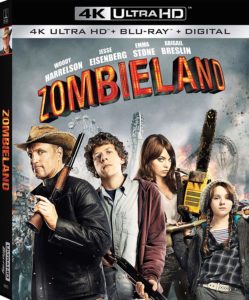2012
Posted on March 2, 2010 at 10:00 am
“2012” is yet another example of technological genius and story-telling mediocrity. Its careless, almost gleeful destruction of the entire world makes the brilliant CGI work jarring in a way the film-makers did not intend.
It has the usual disaster film elements: concerned scientists pick up disturbing information, staring at computer screens and using important-sounding jargon (something about neutrinos). Government bureaucrats are reluctant to believe its implications. People say, “That’s impossible!” Some ancient culture predicted this all along. Some crackpot conspiracy theorist predicted it all along, too. The disaster brings out the best and the worst in people. Someone says, “I thought we’d have more time.” The same dozen people keep running into each other. Iconic landmarks collapse. The entire world may be at risk, but we still have time for a little romance and some touching lessons about the importance of family. There are some sad deaths but a couple of convenient and satisfying ones as well. And when things really get bad, there’s a soaring angelic choir on the soundtrack.
But a disaster film has to be about survival, and this one, from how-can-I-blow-up-the-world-today writer/director Roland Emmerich (“Independence Day” and “The Day After Tomorrow”) is too cavalier in tone, soft-pedaling the real implications of its apocalyptic storyline as though the world’s literally breaking apart is justified in order to bring John Cusack back to his family. It is curiously antiseptic, with only a couple of dead bodies, and the deaths we witness almost like the coming of The Rapture. And, at two hours and forty minutes, it feels endless, as though by the time you get out of the theater, it will be 2012.
The CGI is impressive, especially when the ground buckles and heaves as a car speeds along a crumbling road, trying to stay ahead of the collapse. And you don’t need a lot of story in a special effects movie. But you do need the right kind of story, and this one seems as off-kilter as the convulsing tectonic plates. The question is inevitably posed — how do we decide who will survive? But it is never engaged. There is a momentary mention of the possible problems of a sort of economic Darwinism, selling survival to the highest bidders. But the characters never deal with the consequences of that decision either way; it spends more time on the lesser issue of whether people deserve to know what is about to happen. No one is asking for a debate about philosophy or ethics; just enough narrative Spackle to keep the story going forward. Instead, it repeatedly derails. It’s no more compelling than watching a kid knock down a tower of blocks. In a movie like this, with little time to do more than sketch out the characters, a lot of the story’s validity depends on who lives and who dies. It is harder than it seems at first to put together exactly the right mix of satisfying (bad guys get what they deserve, think Richard Chamberlin in “The Towering Inferno” and Victor Garber in “Titanic”) and sad but honorable (Bruce Willis in “Armageddon,” Leonardo DiCaprio in “Titanic”). The mis-handling of the outcomes here contributes to its inability to engage the audience. And so does the howler-filled dialogue. In the middle of utter catastrophe a scientist stops to make cocktail party chit-chat with a desperate father about the last time they met. In the wake of utter devastation a couple engages in arch but completely leaden banter. (She does miss the opportunity of a lifetime, though, to say something like, “Not if you were the last man on earth.”)
Chiwetel Ejiofor is brilliant as always as the concerned scientist with a heart, though we can’t help wondering whether the stricken look in his eyes is as much about the disaster he is in as an actor as it is about what his character is witnessing. In a story where 21st century robber barons seem to carry the weight, it is perhaps appropriate that the movie itself resembles a hedge fund manager — too expensive, too arrogant, and, finally, dull.


